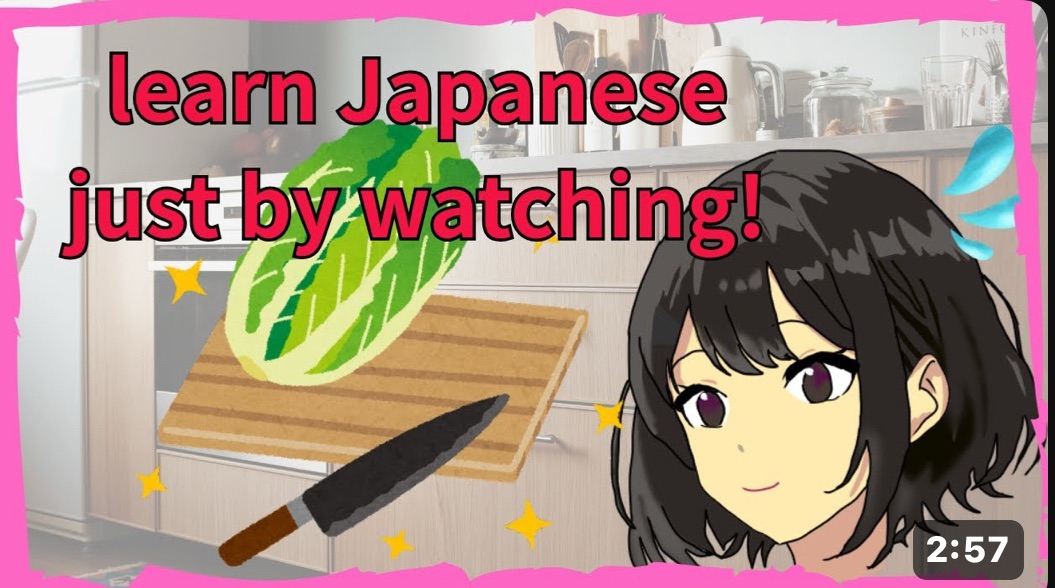This Video
Hello! This is Miyabi.
Sorry for the delay, but here is the explanation of the YouTube video I posted on May 22, 2025.
Words and Meanings
白菜(はくさい):
Since it looks similar to cabbage, many people mistake it for cabbage, but it’s actually a different vegetable. Unlike cabbage, it’s better suited for simmered dishes. In Japan, it’s often used in hot pot dishes during winter. However, in this video, I used it for a stir-fry dish.
古い(ふるい):
This word can mean “old” in the sense of age, like “an old building” or “an old photo.” It is also used for foods that are a bit past their prime. In the video, the phrase “古い白菜” appeared.
傷んでいる(いたんでいる):
basic form:傷む(いたむ)
This describes the state of something becoming spoiled or damaged due to age or deterioration. You can also use this verb for things like「家が傷む(いえ が いたむ)」 “a house gets damaged” or 「服が傷む(ふく が いたむ」“clothes get damaged.”
少し(すこし):
This expresses a small degree or amount. A similar word is “ちょっと.”
切る(きる):
To cut. This verb is used when cutting food with a knife or cutting paper with scissors.
切れてない(きれてない):
“〜ている” expresses a continuing state, and “〜ていない” is the negative form of that. So “切れてない” means “not in a cutting state” or “not cutting.”
切れない(きれない):
Cannot cut / is not able to cut.
包丁(ほうちょう):
Kitchen knife.
この包丁切れない(この ほうちょう きれない):
This knife can’t cut / is dull.
冷凍(れいとう):
Frozen.
豚(ぶた):
Pork.
「豚(ぶた)」,You’ve learned this word before.

ミンチ(みんち):
Ground meat (minced meat).
冷凍の豚ミンチ(れいとう の ぶた みんち)
Frozen ground pork.
味付け(あじつけ):
The act of seasoning (adding flavor).
完成(かんせい):
Something is completed. In this video, it refers to a finished dish.
Other Expressions
There are also other expressions used to describe old or past-prime ingredients besides the ones introduced in this video:
しおれている:
Used for leafy vegetables that have lost moisture. Only used for plants. When talking about food, it’s commonly used for leafy greens.
しおしお・しなしな:
Both are onomatopoeic words. They describe vegetables that have lost moisture.
腐る(くさる):
To rot / spoil.
腐っている(くさっている):
In a rotten/spoiled state.
You can use it in phrases like “この白菜は腐っている” (“This napa cabbage is rotten”).
“腐る” is used for food that has gone bad to the point of being inedible.
If the food still seems edible, we often use “傷んでいる” instead.
In this case, the napa cabbage had not reached the level of being “腐っている.”
That’s all for today’s explanation!
In closing
The dish I made in this video was just something I threw together with what I had—it’s not a famous Japanese recipe or anything.
I think it’s interesting to show what kind of everyday meals Japanese people usually eat at home, so I plan to continue posting cooking scenes as Japanese language learning content.
Please subscribe to my channel and stay tuned for more updates!



